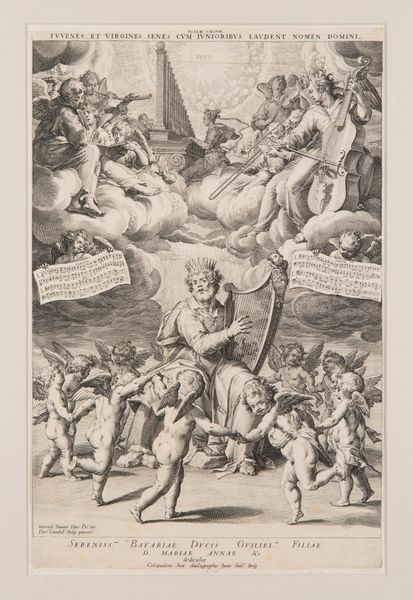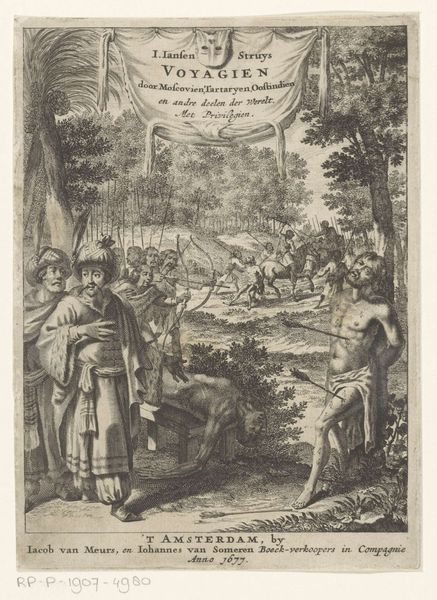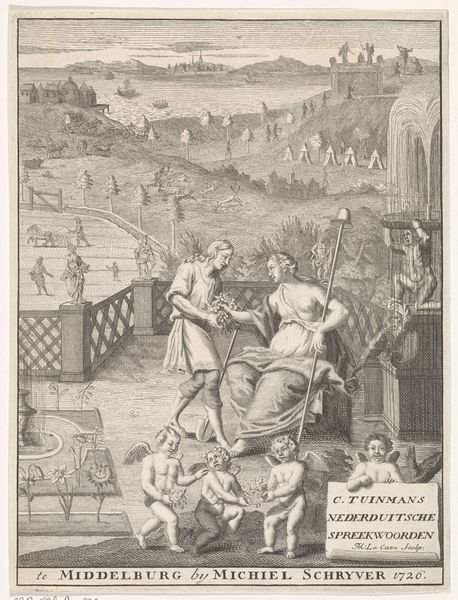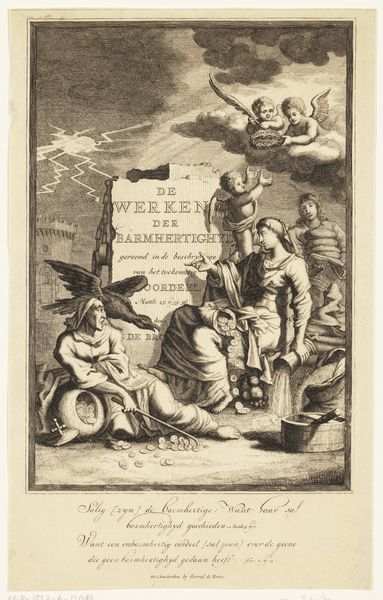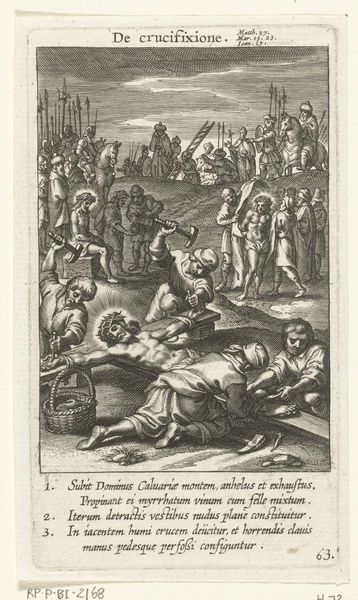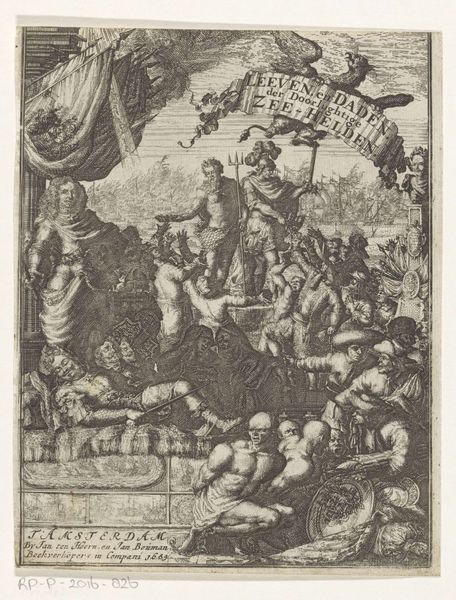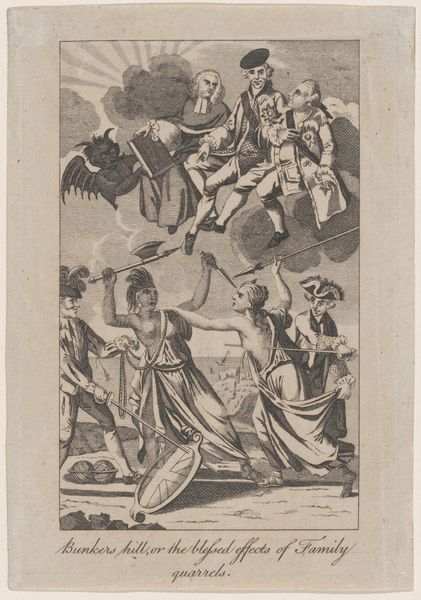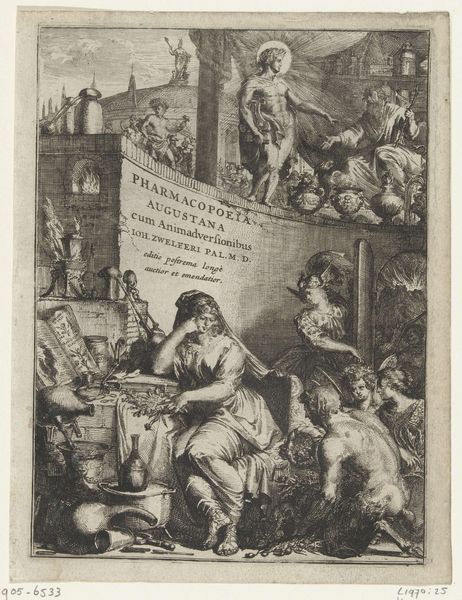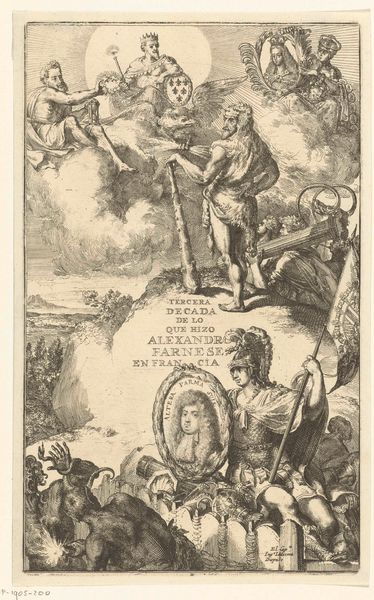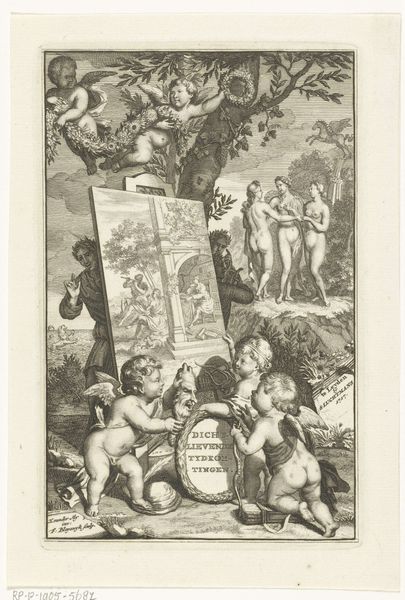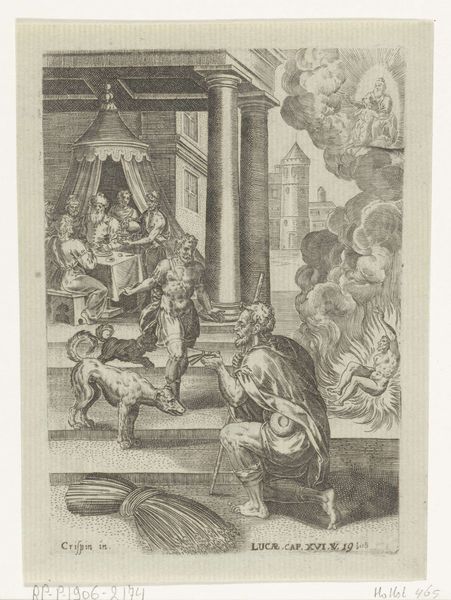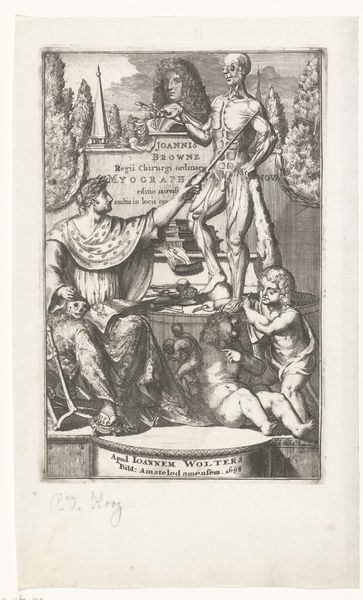
print, engraving
#
allegory
#
baroque
# print
#
old engraving style
#
figuration
#
line
#
history-painting
#
engraving
Dimensions: height 90 mm, width 141 mm
Copyright: Rijks Museum: Open Domain
Editor: Here we have "Woman and Putti with Measuring Instruments," a 1638 engraving. It looks to be full of symbolic figures, maybe an allegory. The woman in the center seems quite pensive. What story do you think it’s trying to tell? Curator: This print offers a fascinating glimpse into the intersections of theology, law, and power during the Baroque era. The woman embodies 'Conscience,' as we can glean from the book dedication, surrounded by putti enacting justice with scales. But I’m curious, what strikes you about her placement amongst these figures and symbols of judgement? Editor: Well, she's kind of separated from the putti. She seems more burdened than powerful. The scales and instruments feel almost oppressive around her. Curator: Exactly! Think about the historical context: this was a time of immense social and religious upheaval. Conscience wasn’t just an abstract idea; it was tied to societal expectations, gender roles, and religious doctrine. Does the image evoke any tension regarding the autonomy of conscience versus external judgment, especially in how the female figure of ‘Conscience’ is depicted? Editor: I hadn’t thought about it that way. The putti feel more like enforcers than guides. Perhaps it’s about the struggle between internal moral compass and imposed authority? Curator: Precisely. The print invites us to consider the power dynamics at play, questioning how much agency this ‘Conscience’ truly possesses in the face of societal expectations and institutional judgment. Editor: I see the piece so differently now. Thank you for pointing out those tensions. Curator: It is precisely in acknowledging these complexities that art truly speaks to us, then and now.
Comments
No comments
Be the first to comment and join the conversation on the ultimate creative platform.
